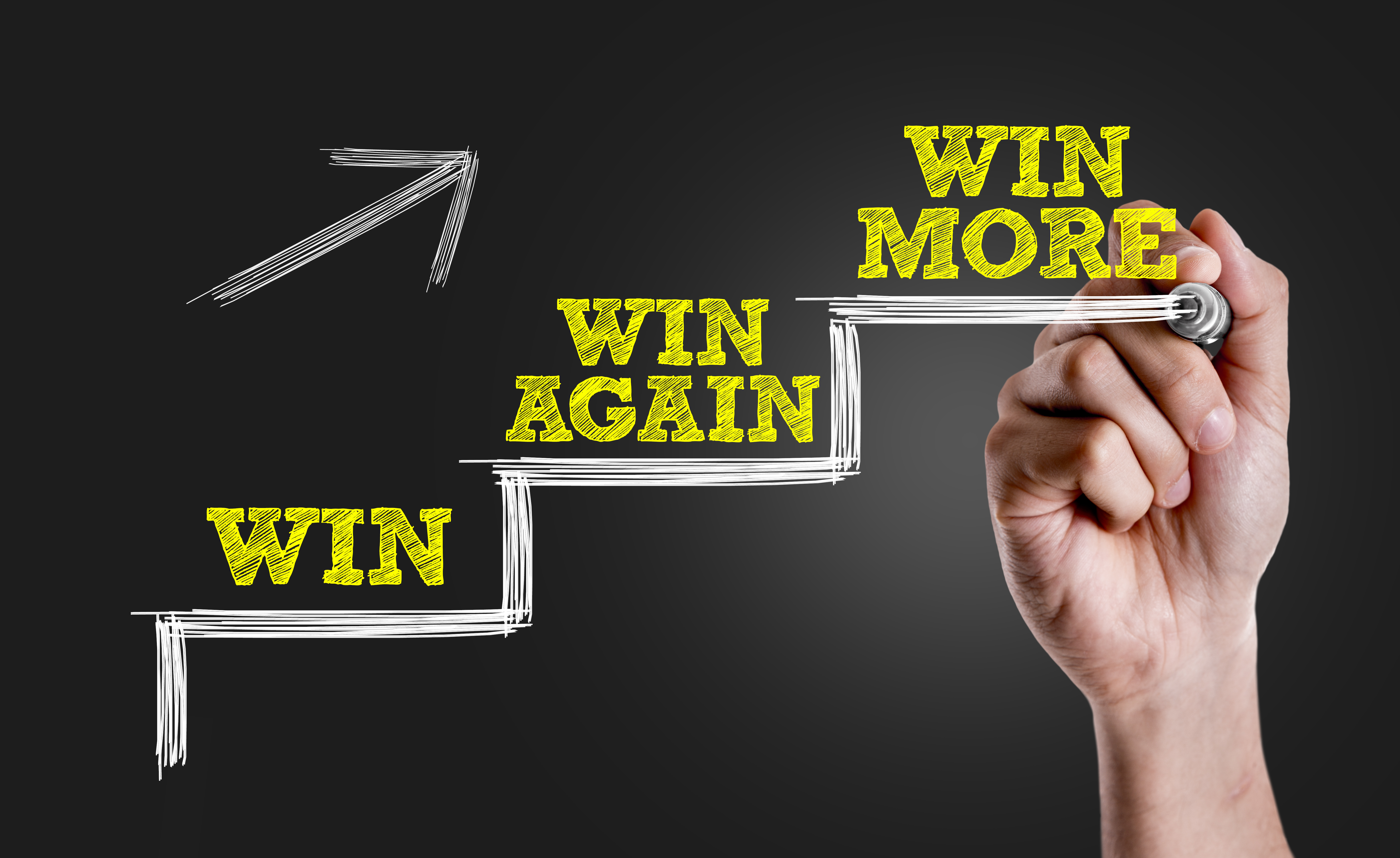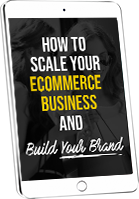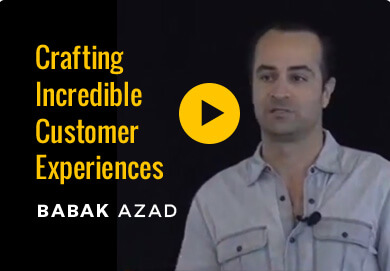 Think about what happens when a customer has an amazing experience with your business. They are happier, more satisfied and more engaged. Which typically means they will buy again from you. So they stick around longer and are worth more to you as a customer. When they are happy, they’re more prone to tell positive stories about your business. Those stories help to craft the brand. Similarly, people talking good things about your business in an authentic way drives word of mouth. Which is the cheapest form of customer acquisition, not to mention helping your paid media efforts to be more effective. And since referred customers have been shown to be some of the highest value, these are particularly profitable customers.
Think about what happens when a customer has an amazing experience with your business. They are happier, more satisfied and more engaged. Which typically means they will buy again from you. So they stick around longer and are worth more to you as a customer. When they are happy, they’re more prone to tell positive stories about your business. Those stories help to craft the brand. Similarly, people talking good things about your business in an authentic way drives word of mouth. Which is the cheapest form of customer acquisition, not to mention helping your paid media efforts to be more effective. And since referred customers have been shown to be some of the highest value, these are particularly profitable customers.
That’s a lot of goodness…
Every marketer wants to grow their business. It’s human nature to do more, push ourselves, and our businesses. At the same time, the big win isn’t always just growth. The payoff happens when the business you’ve built becomes a brand that customers know, love and are excited to engage with.
On the spectrum, performance marketers generally believe that growth comes from pushing paid media hard, and that in selling and delivering on the product, you build the brand. On the other hand, traditional brand marketers approached things as “build the brand and the sales will follow.”
At the same time, we now operate in a world that is no longer either/or. As much as many things in society are portrayed as binary, marketing is not that way. Growing your business with more of a performance marketer’s hat is not at all at odds with building a brand. In fact, there are ways to achieve both concurrently.
One analogy I’ve found helpful is that performance marketing (aka direct response) is to brand as income is to wealth. You need income to get to wealth, just as you need a performance marketing approach to generate sales on the path to building a brand (I’d posit that even if you are funded, there has to be a sustainable business model in place at some point – see Blue Apron if you need a counter-example).
Over my career with my clients, the goals of scale and growth are typically the biggest reasons we engage. With a history in paid media (8 years at Beachbody and with my clients since), exploiting channels like Facebook, TV, and otherwise has been a cornerstone of my work. That always transcends to conversion and maximizing the value of each customer. Let’s be clear, there is a massive amount of scale and value that can be generated with this focus.
At the same time, every marketer faces the point where a channel has seemingly maxed out and so a search for a new channel to scale occurs.
This can be exhausting – the constant paid media, conversion, LTV, CPA model. Again, I’ve always considered myself a paid media guy, driven heavily with an analytics mindset. This stuff can be a big deal and can be used to push a business pretty far.
At the same time, word-of-mouth, and to a certain extent referrals, rarely gets that much attention. It can feel like it’s not trackable or measurable, when in fact there are ways to do so. And yet, it’s the cheapest form of customer acquisition and typically sees the highest value customers.
So where does word-of-mouth come from?
In essence, it comes from the stories customer tell. The good and bad ones. Those show up when someone asks them about a product they are using, on review sites, and beyond.
Where does these stories come from? Most often, from people’s experiences with your business.
And in a world where the customers are the ones who actually define the brand, as much as we try to affect it, those stories – which are an outgrowth of their experiences – are the way the brand comes to life.
It’s this progression and evolution, at least from my side, which has led to the realization of the power of customer experience. Not just CX in the online user experience definition, but much more broadly.
That crafting amazing customer experiences can serve both the growth goals of a business while elevating the brand. And while I don’t believe in silver bullets, it is convenient when a strategy can serve multiple goals concurrently.
Why don’t more business focus on customer experience?
When you’re growing a business, sales are key. Without them, the rest is moot. And with so many different platforms and tools, it’s easy to get caught up in trying to optimize and scale paid channels. But even within doing so, it’s possible to create an experience – I’d argue that Dollar Beard Club (now The Beard Club) has very effectively used videos to craft the experience AND to acquire customers. For them, there really isn’t a distinction between the two.
Also, setting a goal around word of mouth is not common. And while it’s not perfect, looking at direct and organic traffic as well as referral customers can be an indicator of word of mouth, especially when paid media may not be as strong. There are a host of other metrics that can inform the strength of word of mouth – volume of social engagement (shares, hashtags, etc.), as well as indicators like Net Promoter Score (“NPS) and CSAT ratings. All of these typically follow when repeat customer rate is strong and refunds are lower.
None of those are entirely perfect, but there are certainly signals to look at to better inform the volume, and certainly the likelihood of word of mouth.
Finally, it’s also true that retention and building long-term value can simply be a prioritization and sequencing challenge in an organization. Especially those that are just getting some traction on sales. It can mean attention and resources (time, dollars, people, technology, etc.) that feels like it’s pulling from sales. But based on the above, that additional attention should assist sales, not be viewed as a draw from it.
What, then, do great experiences look like?
Think about the businesses you rave about. That your friends and family post about for no good reason other than they are excited to do so. Which businesses get talked about at conferences and in case studies.
There’s the list of regulars – Nordstrom, Amazon, Ritz Carlton, Apple, Starbucks, Disney.
And there’s good reason that they often pop into mind and are talked about. They’ve put a ton of time and attention towards the experience they want their customers to have.
There are countless other examples:
Harley-Davidson
Peloton
SoulCycle
The Beard Club
Buc-ee’s Convenience Store
Sephora
SaddleBack Leather
Rock n’ Roll Marathon
Loot Crate
Each of these businesses has created a brand, in part by intentionally crafting a great experience for their customer.
How they do so can include a variety of tactics:
-Different forms of media, such as video and music, for example, can be powerful in helping to deliver an experience.
-The product itself may be differentiated in such a way that may establish a unique experience
-Arguably, for some businesses like Uber, AirBnb Stitch Fix, the product and experience are so intertwined that there isn’t a clear delineation of one versus the other. This is reflective of many shared economy businesses and new business models around existing services (taxis for Uber, hotels for AirBnb, retail for Stitch Fix)
-Clearly, customer service affects the experience. As do how you handle the various components of the transactional process (acquisition, returns, cancels, etc.)
By far the most powerful way to craft experience is by tapping into people’s sense of identity and community. These are raw human needs, so can be the most powerful. And certainly not mutual exclusive with any of the above.
Let’s look at just a few of the above:
–Harley Davidson customers clearly have a sense of identity attached to what it means to be a Harley rider. And whether it’s at Sturgis in South Dakota or at one of their local Hog events in countless cities across the US, there is a strong sense of community with the Harley world.
–Peloton and SoulCycle are each fascinating by themselves and taken together. Both are focused on indoor cycling. And even though SoulCycle customers go to a brick-and-mortar location while Peloton riders are at home, both nail customer experience.
(As a side note, this is one category I feel particularly qualified to discuss. I spent 8 years at Beachbody, was a licensed SPINNING instructor with Johnny G back in the day, have ridden across the county on a bike and have tried most cycling programs.)
For its part, SoulCycle, has become a lifestyle brand. SoulCycle is about identity, community, and apparel. Despite being a health and fitness company to start, you’ve never seen a before-and-after picture of their customers (at least not by the company). Whereas FlyWheel and SoulCycle were true competitors in NYC, FlyWheel focused on winning and being #1 while SoulCycle has been about being a team and inspiring yourself and others around you. And no doubt music is huge for SoulCycle.
Peloton similarly does a ridiculously good job with music. Anyone who has worked out at home knows how good or bad music can affect that experience. Just how much they are paying for music licenses is not clear, but they are using music well. It’s important to note that the Peloton bike and screen are top-notch. And with superb instructors and even the way they shoot the class, you feel a part of the in-person classes shot at their NYC studio. As much as Flywheel was about competition, Peloton has a leaderboard, a la Strava, but it’s a choice you have the option of hiding. But for those craving competition, it’s there.
–Buc-ee’s may be a brand folks outside of Texas may not know. But the fact that a convenience store is on the list is telling. Buc-ee’s may be the nicest convenience store on the planet. That’s why they’re here. It doesn’t take much to describe why most people go to a convenience store and all the parts they can’t stand. Often it’s to get gas, use the bathroom and to get some simple foods. Rarely are any of these better than horrifying. Instead, a typical Buc-ee’s has 50-100 gas pumps, is immaculately clean (the floor is spotless when you walk in and there are Purell dispensers next to each urinal in the men’s room), and the food is just amazing. When was the last time you said the food at a convenience store was something you looked forward to? And did I mention that these are 100,000 square-foot locations with shelves and shelves of jams, jerky, candy, not to mention a section on Buc-ee’s accessories. Essentially, Buc-ee’s did what I refer to as “Do the opposite.” Take everything that was horrible about a place, and do it in a polar opposite way.
-This list can go on for pages, but the final one I’ll mention now is Loot Crate, a box company for gamers and geeks in general (their language, not mine). What they’ve done particularly well is to tap into Seth Godin’s notion of “tribe.” By naming their customers Looters, on their site and in their emails, they immediately impart a sense of both identify and community on their customers. It’s not imposed, but it’s welcomed. At the same time, something I love is they are very clear about who they are trying to speak to. Their order confirmation email includes an image of a nerdy-looking woman (Note – as a math major from MIT, this is another area I feel highly-qualified to discuss). Loot Crate doesn’t shy away from who they are speaking to. In fact, they lean in. And while that image may not work for anyone else here as necessarily the core customer, it works for them.
Which leads to arguably the most important aspect of crafting an amazing experience.
Knowing your customer.
That sounds like such a simple statement but how many companies try to be all things to all people. Or are concerned about alienating 5-10% of their audience by not leaning in as boldly as Loot Crate has done. Your core demo may not be as clear, but don’t underestimate how much can be lost by not letting your target audience know loud and clear that you’re speaking to them. Part of the job of marketing is to separate the audience – to attract those you want while dissuading those you don’t.
As for devising your own strategy, knowing your customer, at least who you want to attract is one key step. As is knowing your brand values and what you want to stand for.
Keep in mind, too, that experience can and should be tied to measurable aspects of your business. Not perfectly. And not always. But nothing in marketing these days is “perfect” or an “always” thing. Even one of the most measurable components of the business, traffic from Facebook or Google, has clear areas of grey (attribution window, methodologies, cross-device, etc.).
Next, think about what you are replacing.
For starters, be honest about whether your product is new? Very rarely is the product entirely new.
-StitchFix is a new model for shopping for apparel
-Uber is a new way to get a taxi
-Tesla is an alternative to other cars.
The models and execution were different, the core premise wasn’t.
Hotmail was new. The iPhone was new. Spanx was new. If you have a truly new product, then product can win on its own for a while if it’s good.
Given that most products aren’t conceptually new, and they are a way of replacing what people have available to them, dig in to what people are currently using?
-What do people like about the thing you are replacing?
-What are their pain points around those things?
-What do you bring to them, especially if they’ve never had it before? This could be everything from health to convenience to identity.
-What do your customers value? What *should* they value?
Look back on the above examples and how they have created experienced for their customers that didn’t really exist previously.
Finally, it’s important to be self-aware about your organization’s resources and capabilities. What are some areas you have a sense of skill at or feel like you can create a true point of differentiation around?
The final finally, attach a business outcome to these efforts. Don’t just call them “brand marketing”. Depending on what you do, you should see an impact on one or more of these areas:
-Better performing paid media
-Increase in direct, organic and referral customers
-Higher repeat customer rates
-Lower refunds
-Low inquiries to customer care
-Higher NPS scores
It’s a rare case that a strategy can serve the growth and brand goals of a business. Frankly, consumers would rather have great experiences. They have become accustomed to the status quo. But when done well, as these companies have shown in crafting amazing experiences, consumers reward businesses both with their pocketbooks and thru word-of-mouth.
And aren’t those the outcomes that all marketers are looking for?
(I’m always interested to hear from others who they think nails (and doesn’t nail) customer experience. What aspects of the above resonate? Which parts would you like to delve deeper into? )






Leave a Reply
You must be logged in to post a comment.